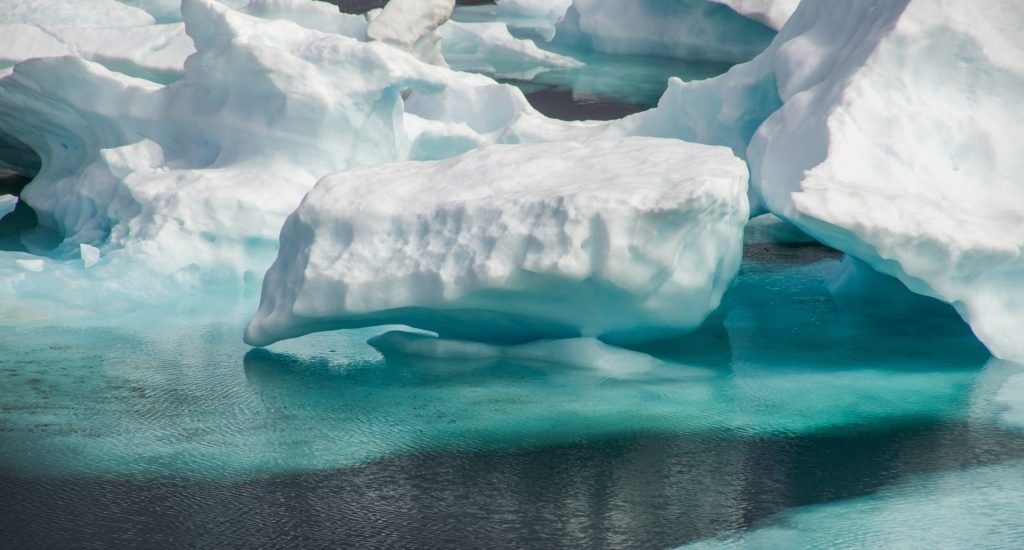Researchers have assessed microplastic levels in the highly productive Barents Sea and proposed several potential contributors, including ocean currents, melting ice, tourism, insufficient waste disposal, shipping activities, and fishing.

Image Credit: University of Exeter
Various studies have demonstrated a rise in global microplastic pollution in marine environments, extending to remote areas like the Arctic.
The Barents Sea, located adjacent to the Arctic Ocean, stands as one of the most prolific oceanic regions globally, hosting an extensive array of diverse organisms.
This sea is additionally a crucial pathway for the inflow of Atlantic water into the Arctic Ocean and has been identified as a possible focal point for microplastic pollution.
A recent study conducted by researchers from the Plymouth Marine Laboratory and the University of Exeter involved the examination of substantial sub-surface water samples collected through transects across the Barents Sea.
The study's aim was to measure, categorize, and understand the distribution of microplastics in this area, with a particular emphasis on assessing potential consequences for zooplankton.
Due to the Barents Sea's high primary productivity and the fact that the size of microplastics coincides with the ideal prey size for zooplankton, it is highly probable that zooplankton in this area are ingesting microplastics. This ingestion potentially serves as a pathway for these human-made particles to enter polar food webs.
Earlier research has demonstrated that the consumption of microplastics by zooplankton can have adverse effects on their fertility, growth, and even influence the sinking rate of their feces. This is a crucial process as it aids in the transport of carbon and nutrients to deeper waters and the seabed.
The mean microplastic quantity in the eastern Barents Sea was found to be 0.011 microplastics per cubic meter (range: 0.007–0.015 m-3).
The study observed elevated microplastic concentrations in closer proximity to landmasses at the southern end of the transect and extending northward toward the ice edge, with levels reaching 0.015 microplastics m-3 along both transect legs.
These microplastics were mainly in the form of fibers (92.1%) and were typically colored blue (79%) or red (17%).
The analysis identified various polymers in the microplastics, including polyester (3.8%), copolymer blends (2.7%), elastomers (7.1%), and acrylics (10.6%). However, the majority of the microplastics were traced back to anthropogenically modified cellulose, particularly rayon.
The study's findings suggest that although the specific source of the plastic cannot be pinpointed through this research, the highest concentrations were detected in the vicinity of known sources of anthropogenic pollution and ice-melting areas, which are recognized reservoirs of marine microplastics.
Local sources of microplastics are also a plausible explanation, particularly with the growing tourism in Svalbard. The inadequate waste infrastructure in the region may lead to more plastics finding their way into the surrounding waters.
The increasing tourism, in conjunction with other local factors such as wastewater discharge, shipping operations, and fishing, could account for the elevated levels of microplastics observed near the coastline in contrast to offshore areas.
It is apparent that microplastic data from the Arctic is limited and this study will act as a reference point for further research. Additionally, sampling methods between studies of microplastics within the Arctic vary and the differing units of measurement used in previous research make it difficult to draw comparisons.
Heather Emberson-Marl, Study Lead Author and MSc Student, University of Exeter
Heather Emberson-Marl who is also associated with the Plymouth Marine Laboratory said, “We recommend that future studies should strive for a standardized sampling protocol to allow for direct comparisons and more robust conclusions on the ecological and toxicological effects on the Arctic’s marine biology.”
The Arctic region is remote and most of us might imagine that it is a pristine natural wonder. But once microplastics enter the marine environment they are transported on currents, often from populated areas many thousands of miles away, ending up far from the source and in the case of the high Arctic, may become trapped in sea ice and released during the spring melt.
Dr. Rachel Coppock, Study Co-Author and Marine Ecologist, Plymouth Marine Laboratory
Dr. Rachel Coppock adds, “Warming seas are causing greater sea ice melt, potentially releasing further microplastics and adding another layer of complexity to marine life adapting to a changing world.”
This study received partial funding from the UK's Natural Environment Research Council (NERC) through the GW4+ internship and the Changing Arctic Ocean Sediments grant.
Journal Reference:
Emberson-Marl, H., et al. (2023). Microplastics in the Arctic: a transect through the Barents Sea. Frontiers in Marine Science. doi.org/10.3389/fmars.2023.1241829.